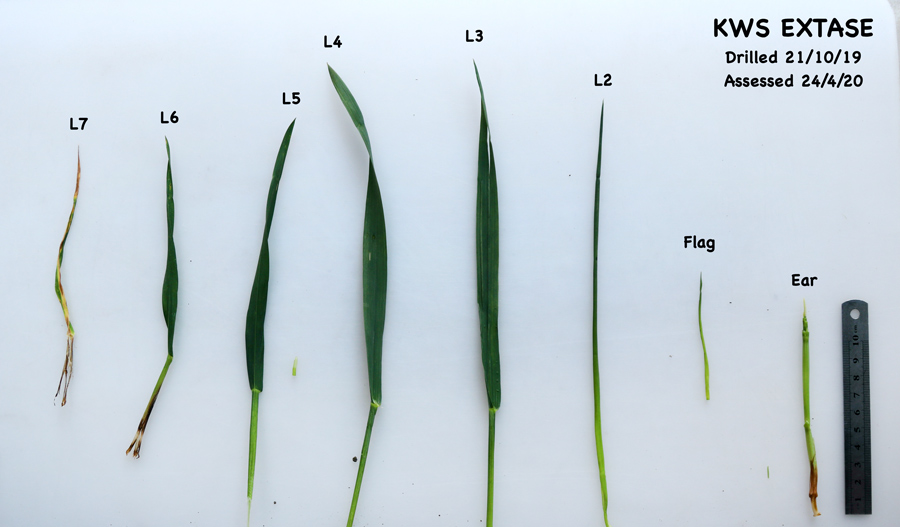Variable Winter Wheat Flag Leaf Emergence Presents Challenge To Growers
12th May 2020
The wide range in winter wheat drilling dates and differing development speeds of some varieties are contributing to making this one of the most complex seasons ever for timing flag leaf sprays, experts are suggesting.
The wide range in winter wheat drilling dates and differing development speeds of some varieties are contributing to making this one of the most complex seasons ever for timing flag leaf sprays, experts are suggesting.
With drilling dates ranging from September to even March for winter wheat drilling, leaf three emergence was always expected to be variable, but it was anticipated the gap between leaf emergence would narrow as the season progressed.
Growers need to be vigilant this season as that doesn’t seem to be happening, says Patrick Stephenson, an AICC agronomist based in Yorkshire.
Later drilled slow developers are only just seeing leaf three fully emerge, while October drilled Extase and Siskin – the type of crop that offers the most yield potential – are already at full flag leaf emergence. For differing reasons, both situations could see a tight gap between T1 and T2 sprays.
It’s important not to compromise on spray timing though, Mr Stephenson stresses. “An exposed target leaf is open to possible infection. Despite T1s on varieties such as Extase, only having gone on some two weeks previously, rain could splash Septoria up the plant. With late sown winter wheat yields compromised the last thing growers want is promising earlier drilled ones being hit by disease.”
For the fast developing varieties, that earlier timing could result in a longer than usual gap to ear emergence, which means product choice and rate should be selected carefully to protect crops through to flowering sprays.
“Any fungicide has a limited lifespan, so you need good Septoria protectants and applied at sensible rates. Ascra (prothiconazole + bixafen + fluopyram), Elatus (prothioconazole + benzovindiflupyr) and Adexar (epoxiconazole + fluxapyroxad) are all appropriate, but there is less rate flexibility with the latter two,” he says.
Bayer’s Gareth Bubb is equally concerned about growers compromising T2 sprays in later drilled crops. Timing in those crops was made harder to identify with leaf three not coinciding with GS32, and then late April showers and high winds delaying T1 applications in some cases, Again it could mean a short interval between T1 and T2.
“Regardless of T1 date it is imperative to fully protect the flag leaf which is why timing, product and dose are all important,” he says. “Too late and the leaf will have been left exposed, too soon and you’ll only protect what has emerged. Equally get the product and dose wrong and you could see green leaf area fall away faster. It’s why we advise a minimum of 1.0 l/ha of Ascra (prothioconazole + bixafen + fluopyram) as it provides effective Septoria control and covers rusts and mildew.”

